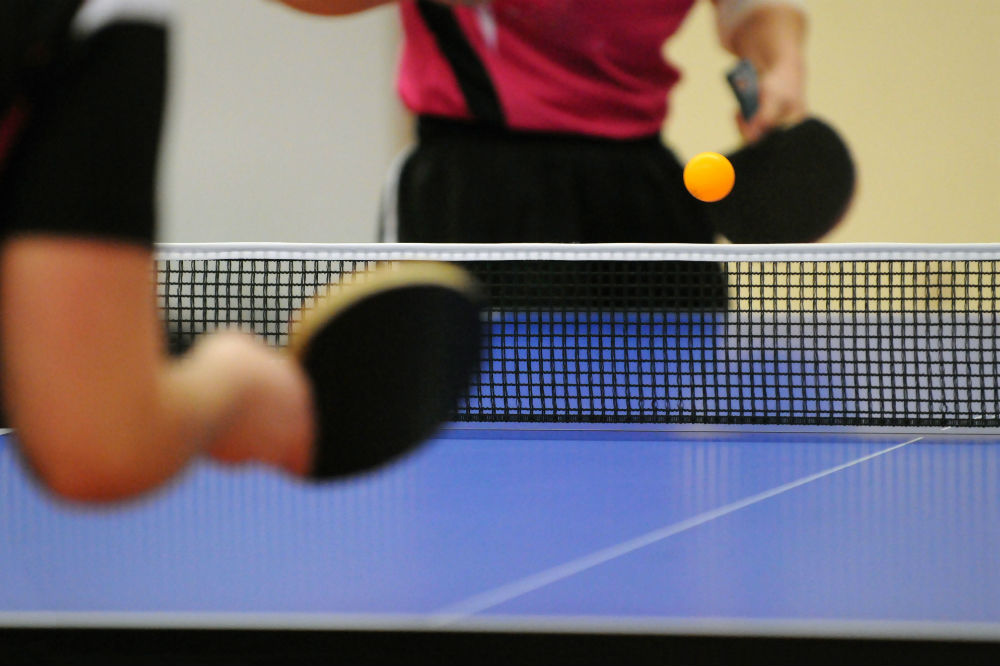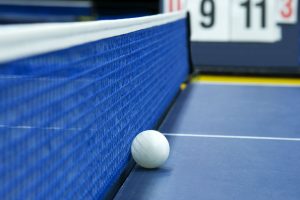- You are here:
- Home »
- Table Tennis
- » How to Score a Point in Table Tennis

How to Score a Point in Table Tennis
Each match starts off with you pitted against your opponent at 0 to 0 — a fair start and an even playing field.
Let us take a look at how to score a point in table tennis using a few tips and tricks to help you tip the scale in your favor and score a point or two in table tennis.
The Basics of How Scoring Works
Table tennis matches will consist of an odd number of games to determine a victor. This could mean the best of 3 out of 5, 4 out of 7, and so on.
These games will be played until a player reaches 11 points. That player is crowned victor of the game, and their score for the match goes up by one.
However, if both players have scored 10 points, it becomes a fight to reach a 2-point lead over your opponent. Once you reach a 2-point lead, you will then win that game.
You earn a point in play by denying your opponent the ability to return a strike.
Serving
The server has to ensure their ball bounces once in your court and then once in your opponent's. Be careful not to touch the net while serving, as this will count as a let serve, meaning it is not scored.
You would move onto the next game, rendering that game null. This factor is especially important when you remember that you only have two serves before you switch.
When your opponent gets to serve, they also get the advantage. Thus, you will want to capitalize on your serves as much as possible.
You will also want the aim of your serve to be challenging to return. The point of the game goes to the player who successfully returns a shot that cannot be received by your opponent.
Faulting
Some stipulations can cause your serve to be illegal, which immediately grants your opponent the game point. To prevent giving away points, always remember to throw the ball up from a flat palm about 6 inches into the air.
You can only hit it as it descends. This rule exists to give your opponent full view of your serve so that it is a fair playing field.
Other rules include not obstructing the ball and hitting the ball with your racket (or bat). Curiously, the latter has leeway when it comes to the fingers and hand.
The fingers and wrist of the batting hand can come into contact with the ball once per swing.
This does not allow multi-hitting, though. You cannot hit the ball with your fingers and then the bat.
However, no other part of your body can come into contact with the ball or even slightly hide the ball during your serve. If you do this, you will immediately fault and give your opponent a free point.

Rallying
So far, we have spoken about gaining or giving away points through faulting or through hitting a winning serve. However, when up against a skilled player, they will more than likely be prepared to return any serve you hit at them.
This is when you and your opponent enter a rally. In simpler terms, this is when the ball is in play after the first return after serving. This is the central part of the game that delivers the signature ‘ping-pong’ noise that we all associate with the game.
Both players enter a battle of attrition to see who can out-return the ball to the other player.
The player who allows the ball to bounce more than once in their court loses the game, and the point goes to the other player.
As you can imagine, this is where many professional players put their hours of training. They practice as much as possible to win those crucial points.
Final Words
Matches are divided up into games of an odd number. Matches commonly consist of 3 best-of-5 games.
Each game consists of playing to 11 points, or until the first player over 10 has a 2-point lead. You earn these points by not having the ball bounce more than once in your court.
Just because you aren’t professional doesn’t mean you can’t prepare yourself.
Train yourself to keep up with the flow of a rally and learn techniques that could potentially earn you those games.
Now, you know the basics of scoring and how to lose points. You can now go to the table knowing the basics of winning and how to score points. So get out there and start winning!
